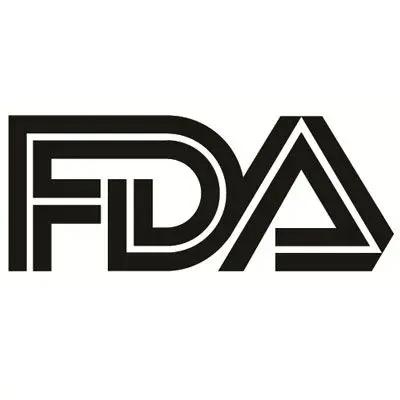News
Article
HCV Screening Rates During Pregnancy Remain Suboptimal After 2020 Guideline Update
Author(s):
Key Takeaways
- Universal HCV screening guidelines in 2020 led to increased screening among pregnant women compared to nonpregnant women, though overall uptake remains suboptimal.
- The study utilized TriNetX LIVE data, analyzing HCV screening rates from 68 US healthcare organizations, covering 115,490,864 patients.
HCV screening in pregnant women increased following universal screening guidelines, but the proportion of women who were ever tested remained low.
Roshni Singh, MD
Credit: Roshni Singh on LinkedIn

New research is shedding light on differences in screening practices in pregnant and nonpregnant women following the implementation of universal hepatitis C virus (HCV) screening guidelines in 2020.1
Leveraging TriNetX LIVE electronic health record data, the study found guidance to test for HCV in all adults and during each pregnancy was associated with a statistically significant increase in HCV screening among pregnant versus nonpregnant women. However, suboptimal uptake was noted in both groups, with 39% of pregnant women and 9% of nonpregnant women ever being tested for HCV.1
According to the World Health Organization, an estimated 50 million people have chronic HCV infection globally, with about 1 million new infections occurring per year. In 2022, approximately 242,000 people died from hepatitis C, primarily from cirrhosis and hepatocellular carcinoma. Although the virus is typically transmitted through the reuse or inadequate sterilization of medical equipment and the transfusion of unscreened blood and blood products, it can also be passed from an infected mother to her child.2
In 2020, the US Preventive Services Task Force and US Centers for Disease Control and Prevention released updated guidance on HCV screening recommendations, updating previous guidelines to reflect new evidence on HCV made available since previous iterations of the guidelines were published in 2013 and 2012, respectively. Now, it is recommended that all adults be screened for HCV at least once in their lifetime and during each pregnancy.3,4
While it is known that screens for HCV in pregnancy increased after the implementation of these guidelines, differences in screening between pregnant and nonpregnant women have not been explored.1
To assess differences in HCV screening among pregnant and nonpregnant women, Roshni Singh, MD, an infectious diseases fellow at Boston Medical Center, and colleagues examined TriNetX LIVE electronic health record data from 68 US health care organizations and 115,490,864 patients across all census regions. Using a multiple-group interrupted time series analysis, they compared HCV screening rates for pregnant and nonpregnant women for each 6-month period before and after the 2020 guidelines, from January 2014 to December 2019 and July 2020 to December 2022, respectively.1
Of note, January to June 2020 was considered a washout period to account for the COVID-19 pandemic peak and guideline dissemination.1
For each period, investigators included women 15-45 years of age with a medical visit during the specified 6-month period. Those with an ICD-10 delivery code during or within 8 months after the 6-month period were included in the pregnancy group, excluding pregnancies ending in miscarriage, abortion, or stillbirth. Those without a delivery code during the selected 14 months comprised the control group.1
From 2014 to 2022, a total of 79,231 incident HCV tests occurred among pregnant women and 678,951 occurred among nonpregnant women. Investigators noted screening for HCV increased from 52 to 117 tests per 1000 person-years among pregnant women and 16 to 24 tests per 1000 person-years among nonpregnant women from 2014 to 2019, during 461,178 and 21,209,097 person-years of follow-up, respectively.1
After the guidance change, screening per 1000 person-years increased from 141 to 253 among pregnant women and from 29 to 37 among nonpregnant women during 289,888 and 13,129,610 person-years of follow-up, respectively. By December 2022, 38.73% of women with a pregnancy and 8.67% of nonpregnant women were ever HCV tested.1
Visual inspection revealed slight increases in incident HCV testing during the pre-period in each group. Investigators pointed out the F test was statistically significant (F2,20, 47.1; P <.001), suggesting a divergence in trends between pregnant and control groups.1
After screening guidance, no immediate-level change in HCV testing was observed between the pregnancy and control groups. However, the HCV screening rate increased by 21 HCV tests per 1000 person-years (95% CI, 16-26; P <.001) per 6-month interval post-guidance change versus pre-guidance change in pregnant compared with nonpregnant women.1
“The increasing but suboptimal HCV screening suggests innovative strategies are needed to improve HCV diagnosis and treatment,” investigators concluded.1 “Perinatal care is a unique health care touchpoint and could be a key time to implement the national HCV elimination plan."
References
Singh RP, Biondi B, Gordon SH, Linas BP, Epstein RL. Hepatitis C Virus Screening in Pregnant and Nonpregnant Women After Universal Screening Guidelines. JAMA. doi:10.1001/jama.2024.28774
World Health Organization. Hepatitis C. April 9, 2024. Accessed February 24, 2025. https://www.who.int/news-room/fact-sheets/detail/hepatitis-c
US Preventive Services Task Force. Screening for Hepatitis C Virus Infection in Adolescents and Adults: US Preventive Services Task Force Recommendation Statement. JAMA. doi:10.1001/jama.2020.1123
Schillie S, Wester C, Osborne M, et al. CDC Recommendations for Hepatitis C Screening Among Adults — United States, 2020. MMWR Recomm Rep 2020;69(No. RR-2):1–17. doi:http://dx.doi.org/10.15585/mmwr.rr6902a1





